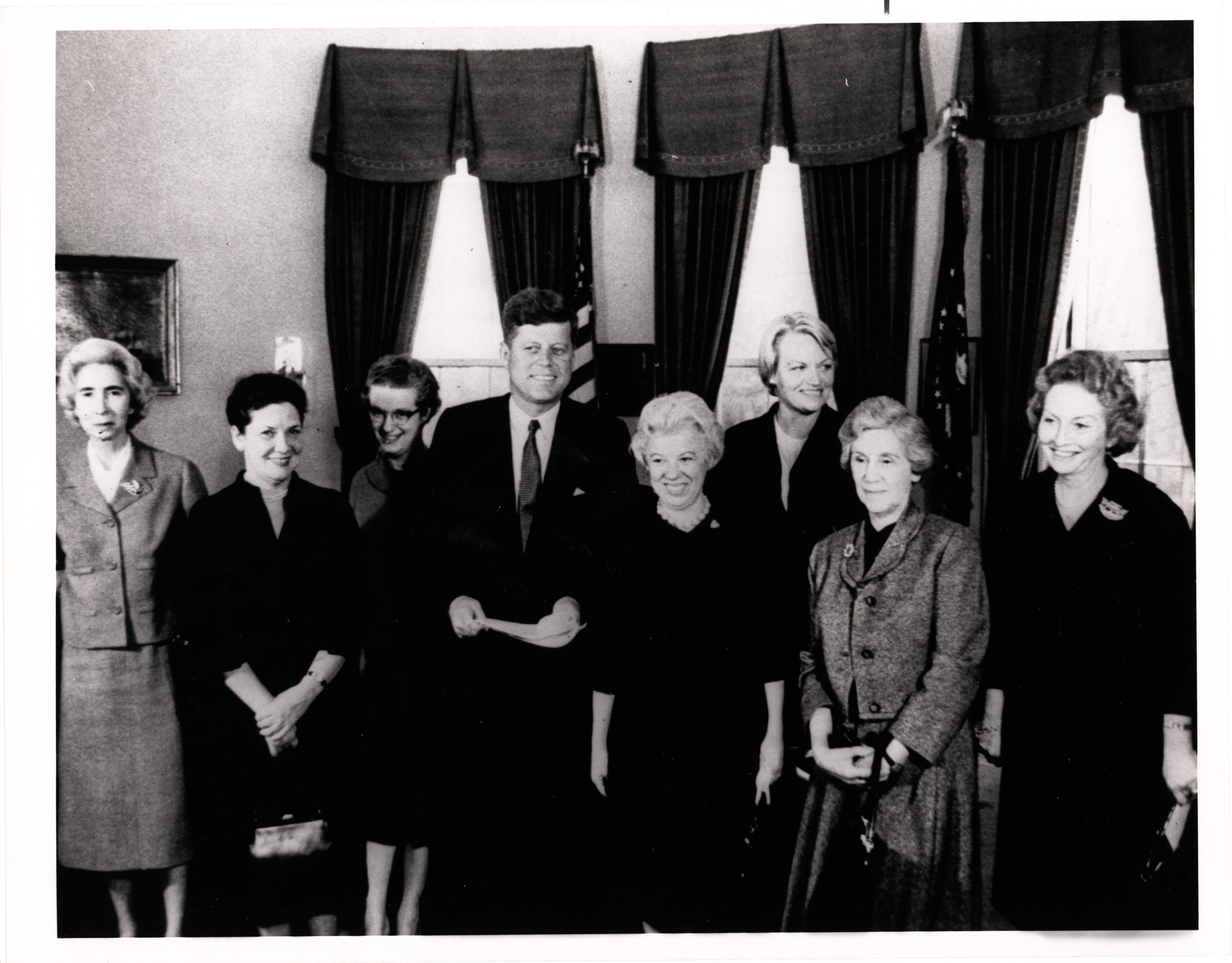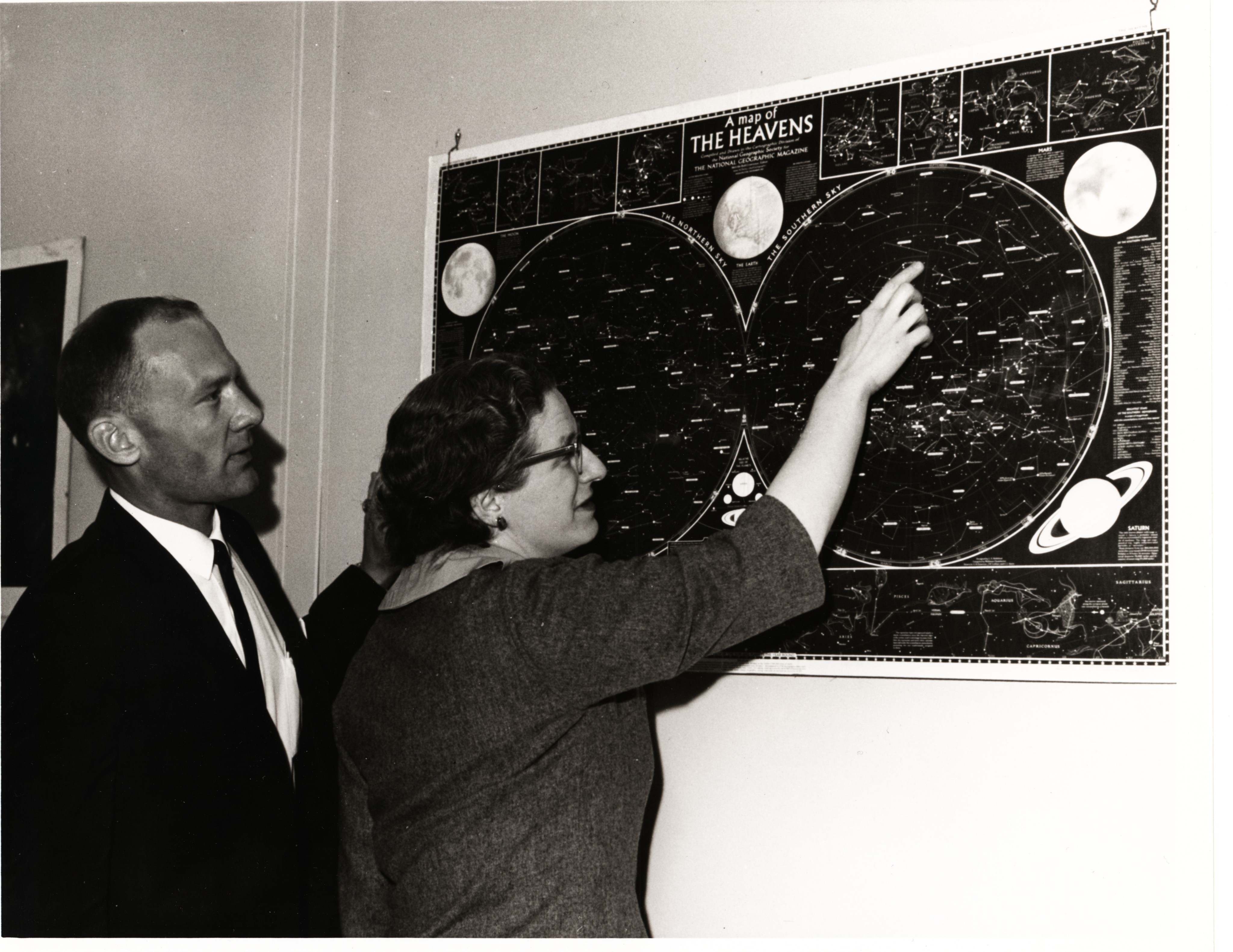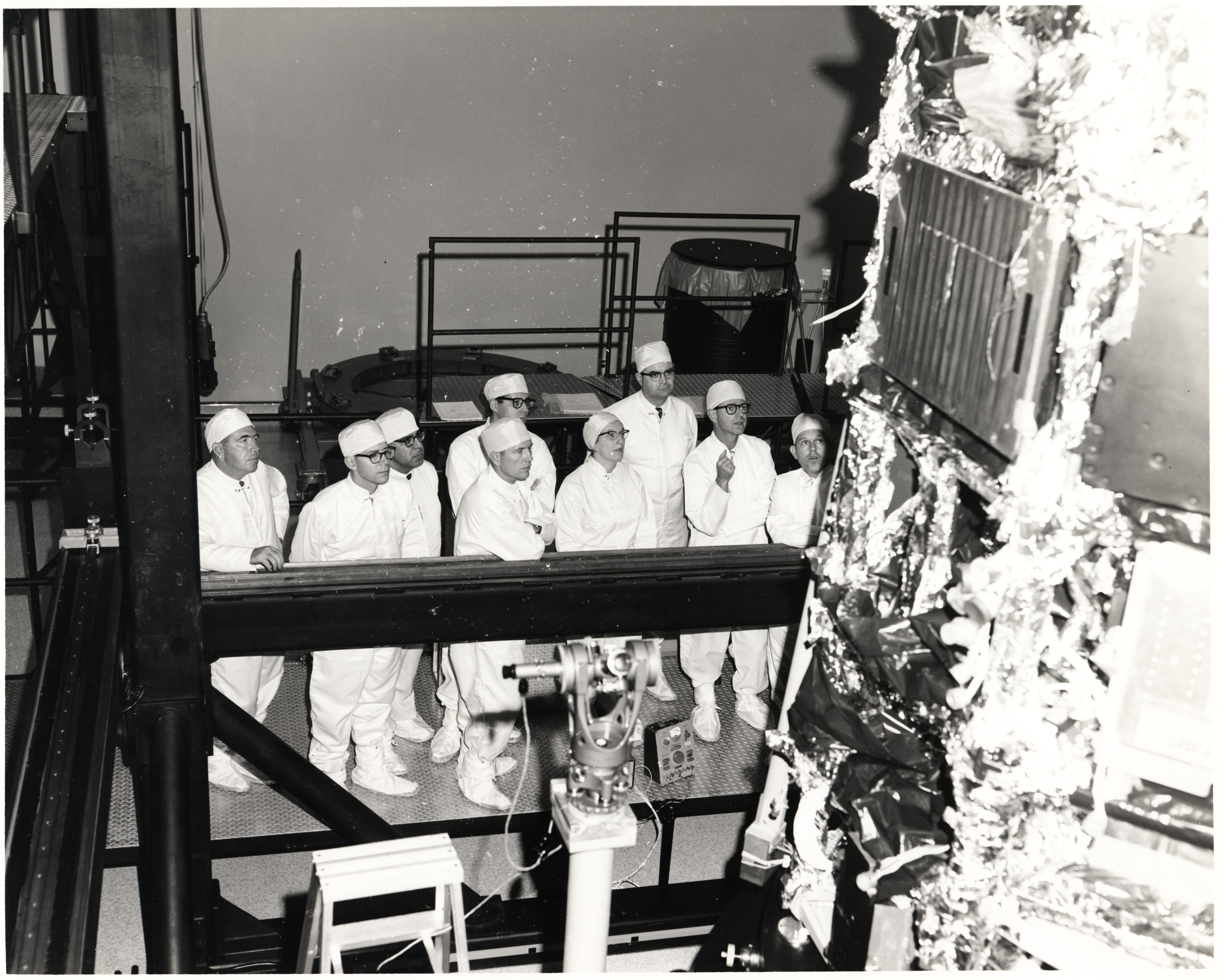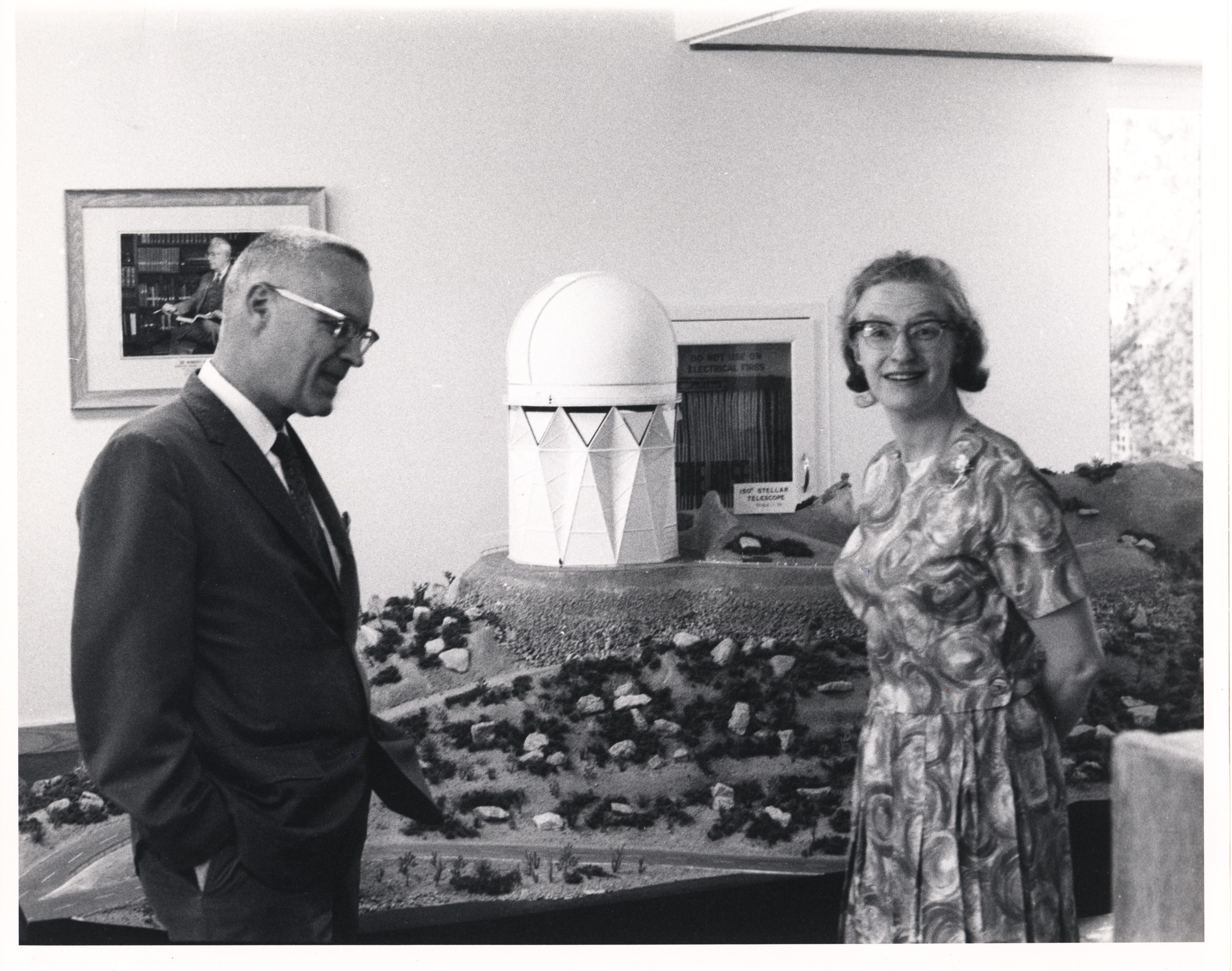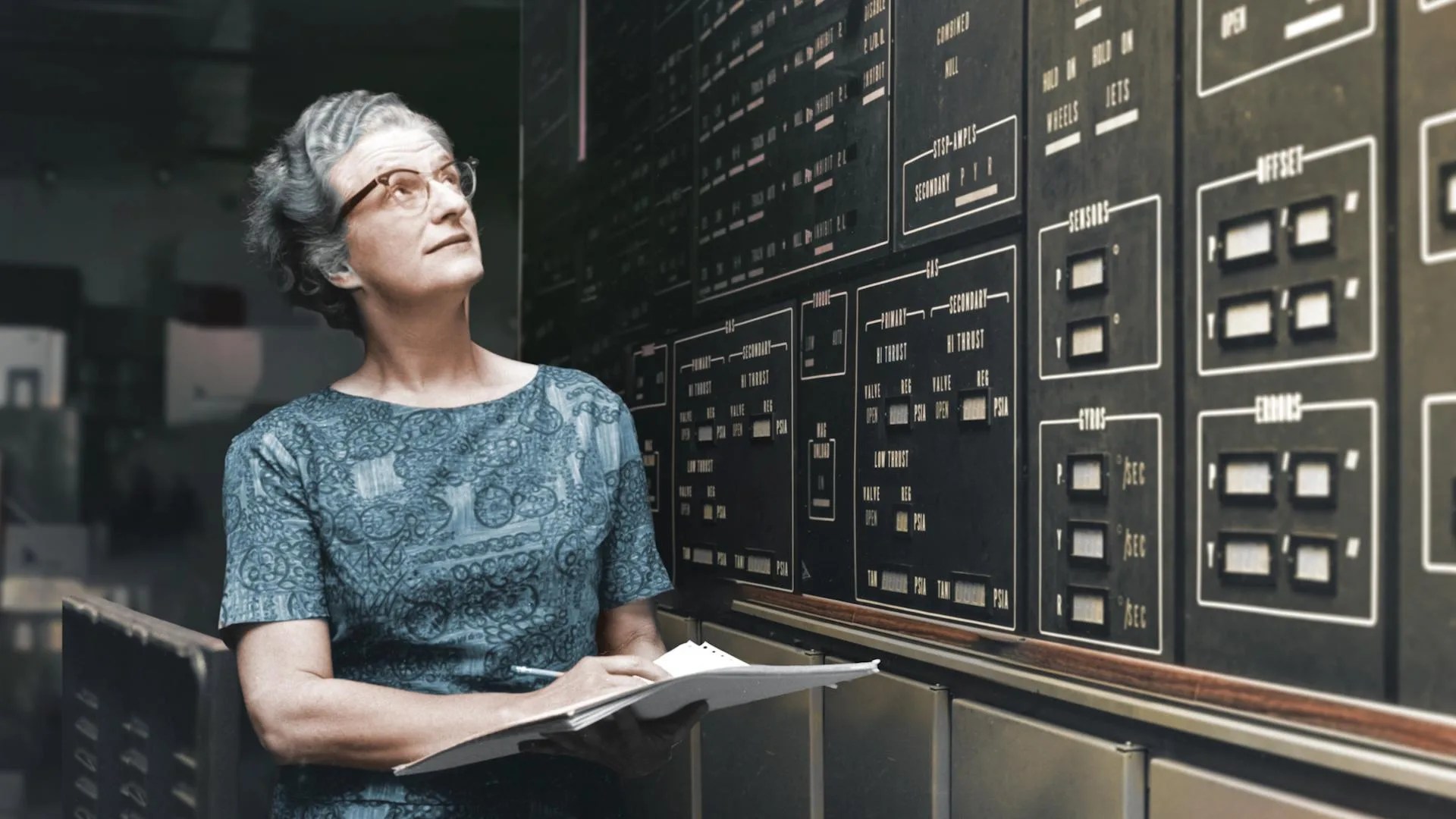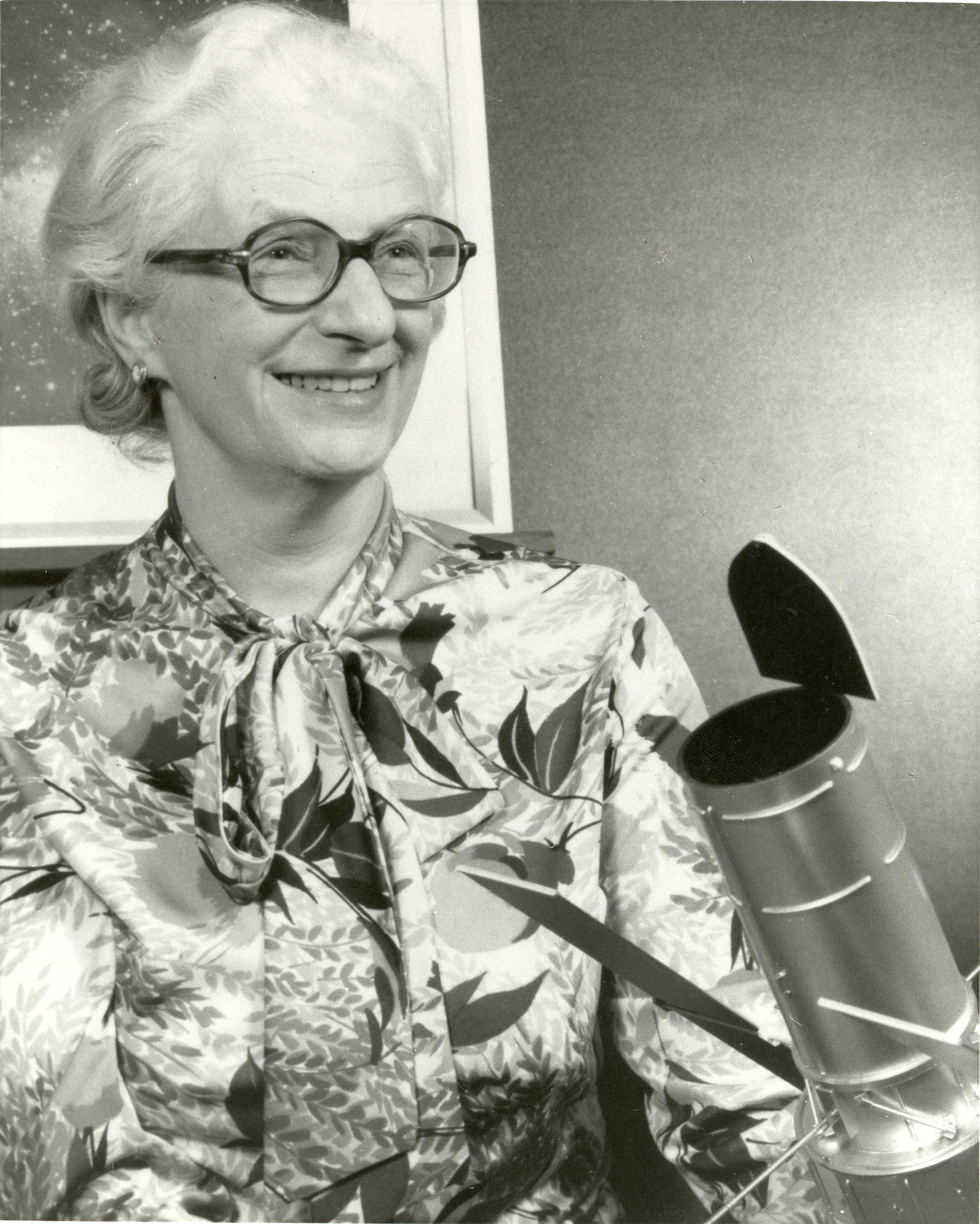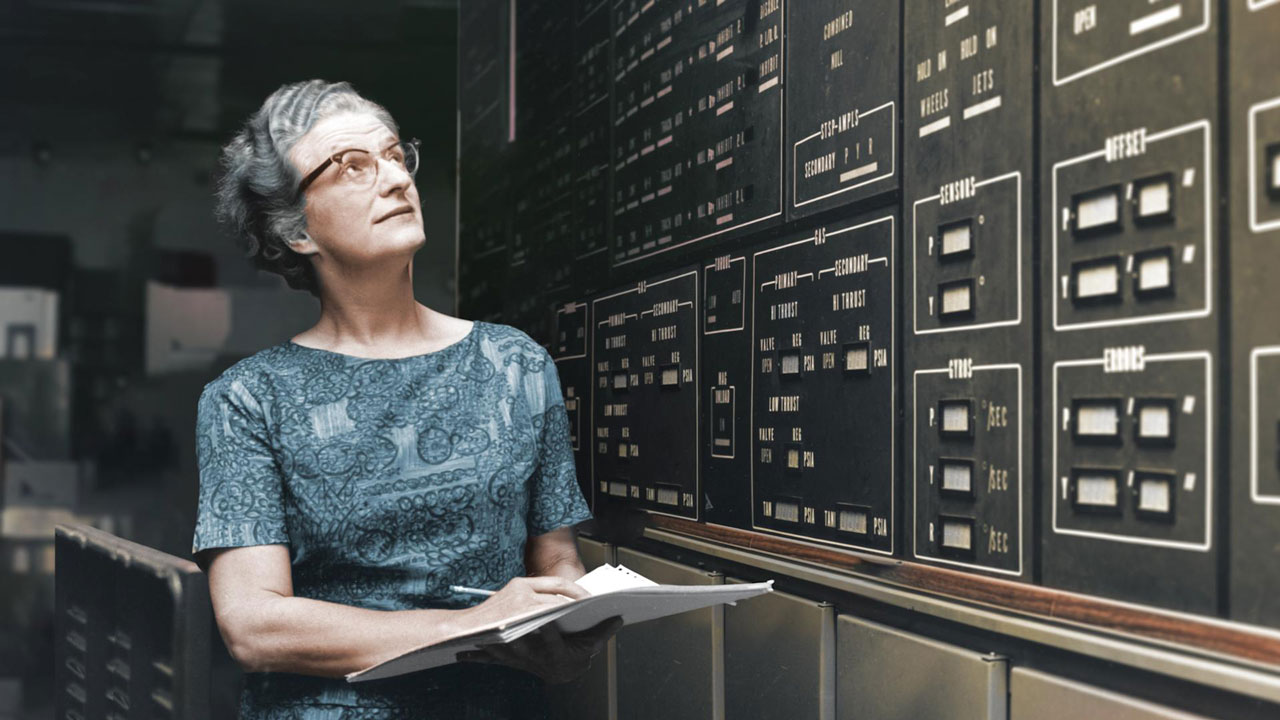
Dr. Nancy Grace Roman (1925-2018)
Astronomer | "Mother of Hubble"
After three decades in orbit and thousands of discoveries, it is hard to believe that the Hubble Space Telescope was ever a contentious idea. However, in the mid-20th century, a budget-starved NASA and a post-World War II government were hesitant to follow the ambitious ideal of a giant new telescope. One woman, nicknamed the “Mother of Hubble,” pushed the first major space-based telescope from hopeful speculation to pioneering reality.
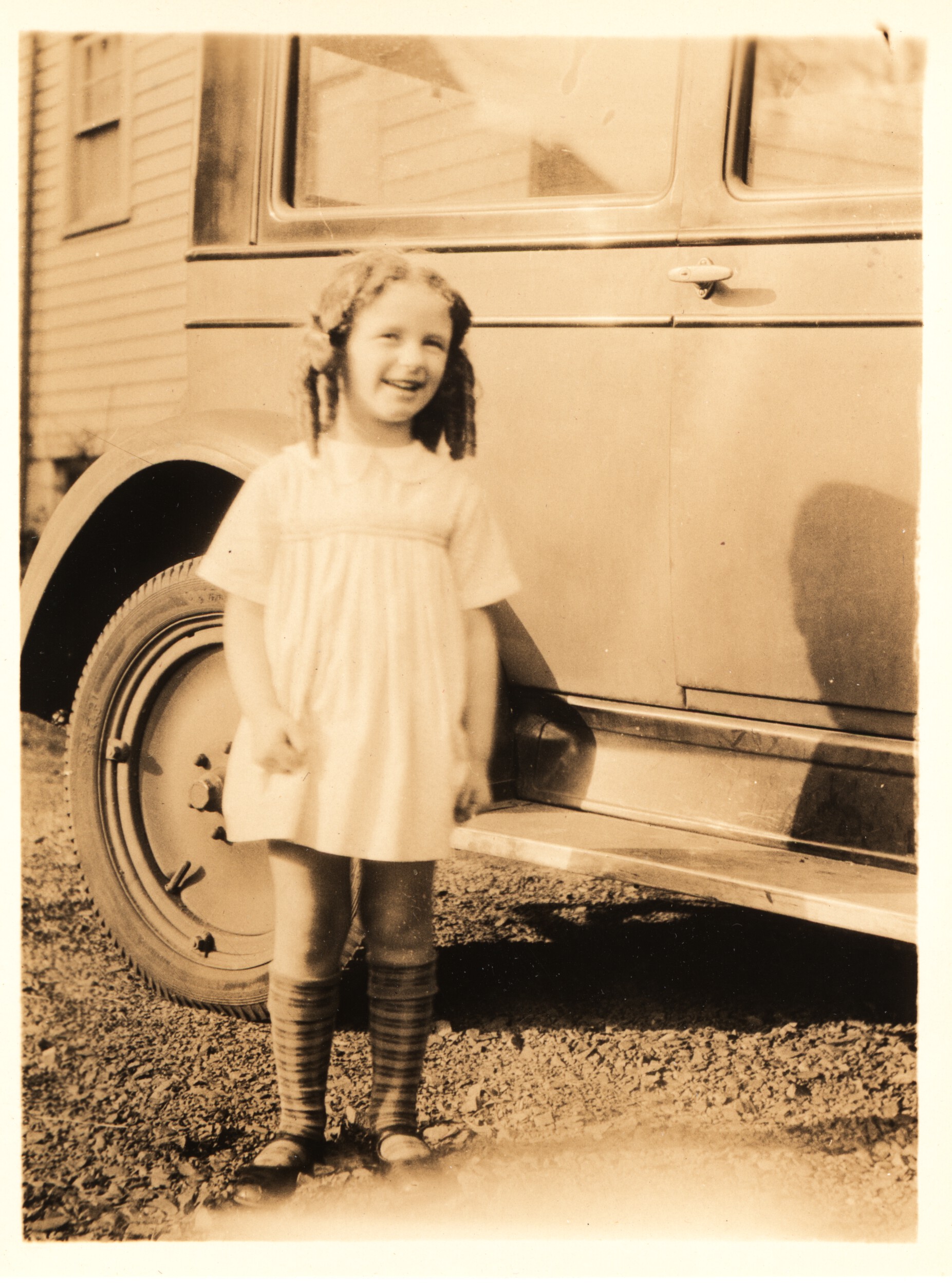
Breaking Barriers
As a woman in science, Nancy Grace Roman was met with skepticism or rejection at nearly every turn. “I was told from the beginning that women could not be scientists,” she often recounted. Her high school counselor scoffed at her desire to take algebra over Latin and a college professor gave her the highest praise she had yet received: that she “might” make it as a woman in physics. Despite opposition, Roman remained steadfast in her desire to pursue astronomy, going on to become NASA’s first female executive.
Roman was born on May 16th, 1925 to Irwin Roman, a geophysicist, and Georgia Smith Roman, a music teacher. She spent her childhood moving around the country for her father’s work, living in cities from Nashville to Reno to Baltimore. Her mother took her on nature walks to see birds and trees, but the constellations were what enraptured her most. By 6th grade, Roman had organized her friends into an astronomy club, and by 7th grade she knew that she wanted to devote her life to studying the cosmos.
Roman received her bachelor’s in astronomy from Swarthmore College in 1946 and her doctorate in astronomy from the University of Chicago in 1949. While she loved teaching at the university and researching stars at the university-operated Yerkes Observatory, she noted that there were no women at her institution with tenure in astronomy, despite their many years of experience. In fact, at that time, there was only one tenured female astronomer in the country. Believing that her career aspirations would be stifled in academia, Roman left to take a position in radio astronomy at the Naval Research Laboratory.
In 1959, an employee at the fledgling NASA asked Roman if she knew someone who might be interested in creating a space-based astronomy program. She volunteered herself and NASA hired her only six months after the agency’s formation. Despite her years of experience and international reputation as a scientist, her previous work had been so underpaid that it was not recognized as employment and she was hired as a new PhD graduate. By 1960, Roman was serving as NASA’s Chief of Astronomy and Relativity, but could still not get past the secretaries without stopping to explain her credentials. Looking back on her career in science, Roman joked, “If I hadn’t been stubborn, I would’ve been talked out of it years earlier.”
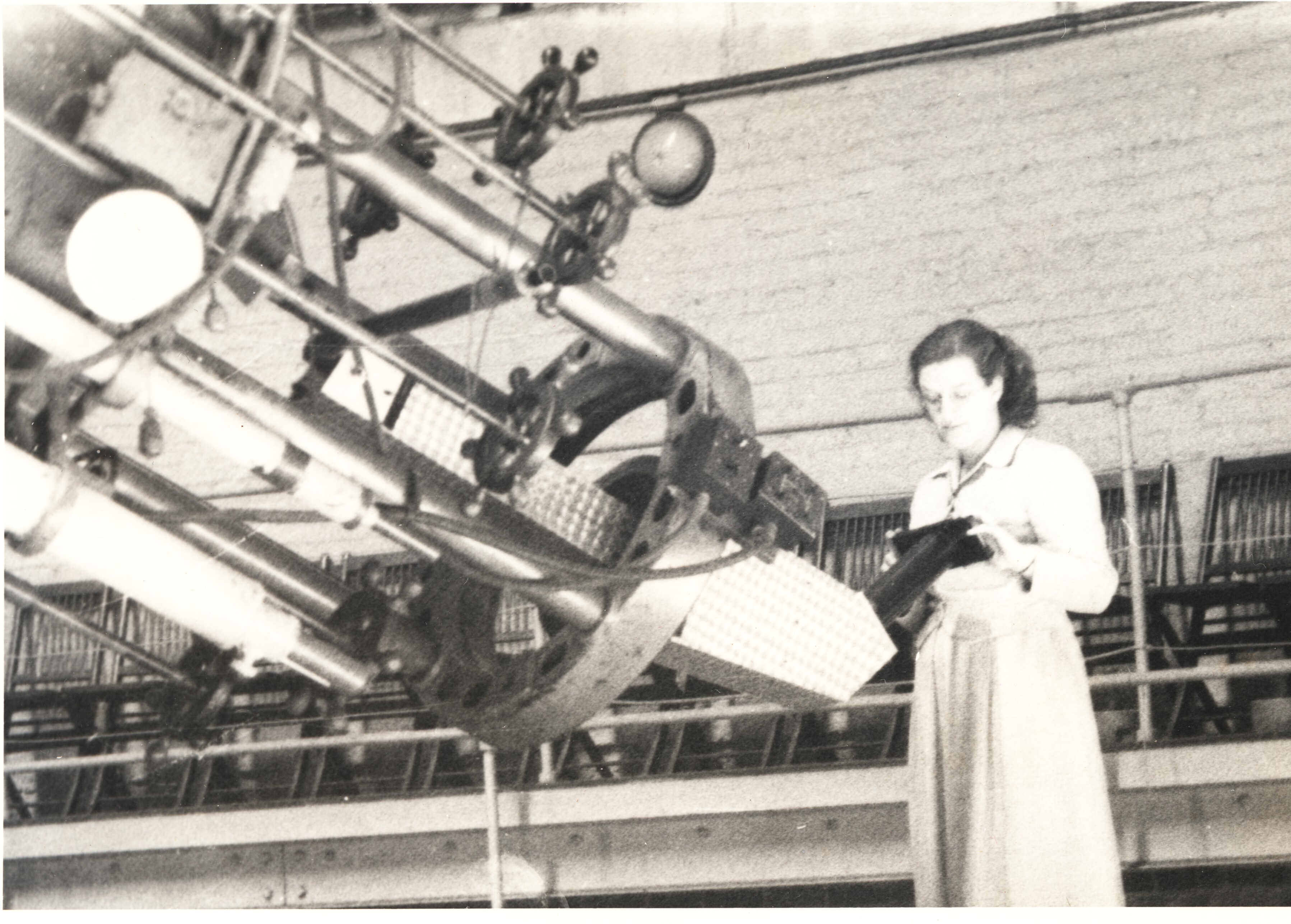
Championing Hubble
Roman’s duties at NASA involved securing and administering grant funding for different missions. She liked interacting with scientists in the international community and felt that she could make a big impact by determining which projects moved forward. As Roman listened to the scientists’ goals and aspirations, one thing became clear: there was an intense desire for a space-based telescope.
Over the next two decades, Roman devoted herself to the cause of securing congressional approval and funding for what would become the Hubble Space Telescope. Roman led science and planning committees, brought together scientists and engineers, briefed executive branch officials, and lobbied NASA officials to approve a project as financially and scientifically ambitious as the Large Space Telescope, as it was then called. When talking to Congress, she often quipped that “for the price of one night at the movies each year, each American would receive 15 years of exciting discoveries.” She was almost right – each American has now received over 30 years of discoveries!
From the location where it would be built to the size of its instruments, Roman was involved in every crucial decision about the telescope. Equipped with a strong scientific background and knowledge of the government’s innerworkings, she acted as the link between astronomers and Congress. A born leader, she was known for her unwavering commitment to the mission, regardless of who or what stood in her way. At NASA, Roman felt, people didn’t look at her gender, but at the value of her work.
Nearly 20 years after she started at NASA, Congress approved the mission. One of Roman’s most significant accomplishments to the mission was getting image sensors called charge-coupled devices (CCDs) installed instead of the previous standard sensor. While they seemed to be a risk at the time, CCDs would go on to become the new gold standard for astronomical imaging. Roman also met continuously with scientists to define the scientific objectives for the telescope and how the mission could be designed to meet them, creating a set of minimum specifications for the telescope that she used as a bottom line when speaking to Congress. Roman’s dedication to the Hubble project led her colleague and future Hubble Chief Scientist Ed Weiler to nickname her the “Mother of Hubble.”
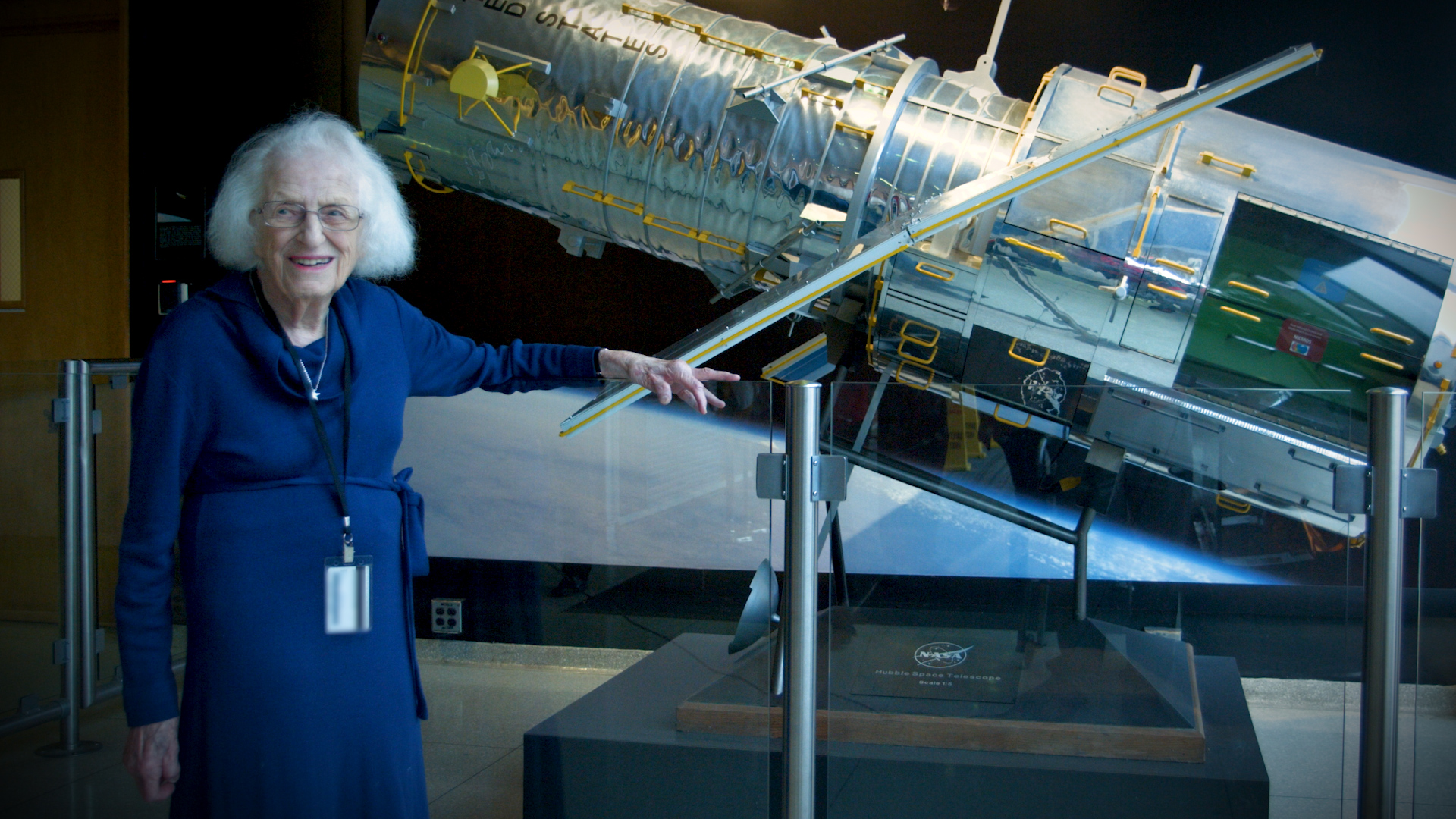
Creating a Legacy
Roman retired from NASA in 1979 to care for her mother, but stayed closely involved as a consultant for astronomical catalogs. She returned to work in 1981 in the Goddard Space Flight Center’s Astronomical Data Center, becoming its director in 1995 before retiring again in 1997. She went on to teach science to junior high students at a school in Washington, D.C. and record audio textbooks for the visually impaired.
Throughout her last decades, Roman kept up to date with Hubble’s progress. In 1994, when NASA announced to the public that they were finding solutions for the faulty primary mirror, Roman was in the audience, knitting (as Ed Weiler remarked, “knitting in the back of the room was her trademark”). NASA often invited her back as a speaker, and in 2017 she achieved pop culture fame with her inclusion in the Women of NASA LEGO set. Roman received numerous awards in her lifetime, including the Federal Women’s Award from President John F. Kennedy, the Women in Aerospace Lifetime Achievement Award, and the NASA Exceptional Scientific Achievement Award. Despite her achievements, she would say of Hubble that “I think it would have existed sooner or later without me,” before cheekily adding that “I think the timing was better when I got into it.”
Nancy Grace Roman passed away on December 25th in Germantown, Maryland at the age of 93. In May of 2020 – 15 months after her passing – NASA announced that their next flagship mission would be named in her honor. The Nancy Grace Roman Space Telescope is designed to explore questions regarding dark energy, exoplanets, and infrared astrophysics.
Near the end of Roman’s life, she continued to express her desire for gender equality in the sciences, with hopes of seeing more women in senior positions and with higher salaries. When asked how she feels about her accomplishments, she replied: “Hubble has brought astronomy into everyday life in a much more general way than it was before. The fact that it exists is something I’m proud of.”
Q&A with Nancy Roman
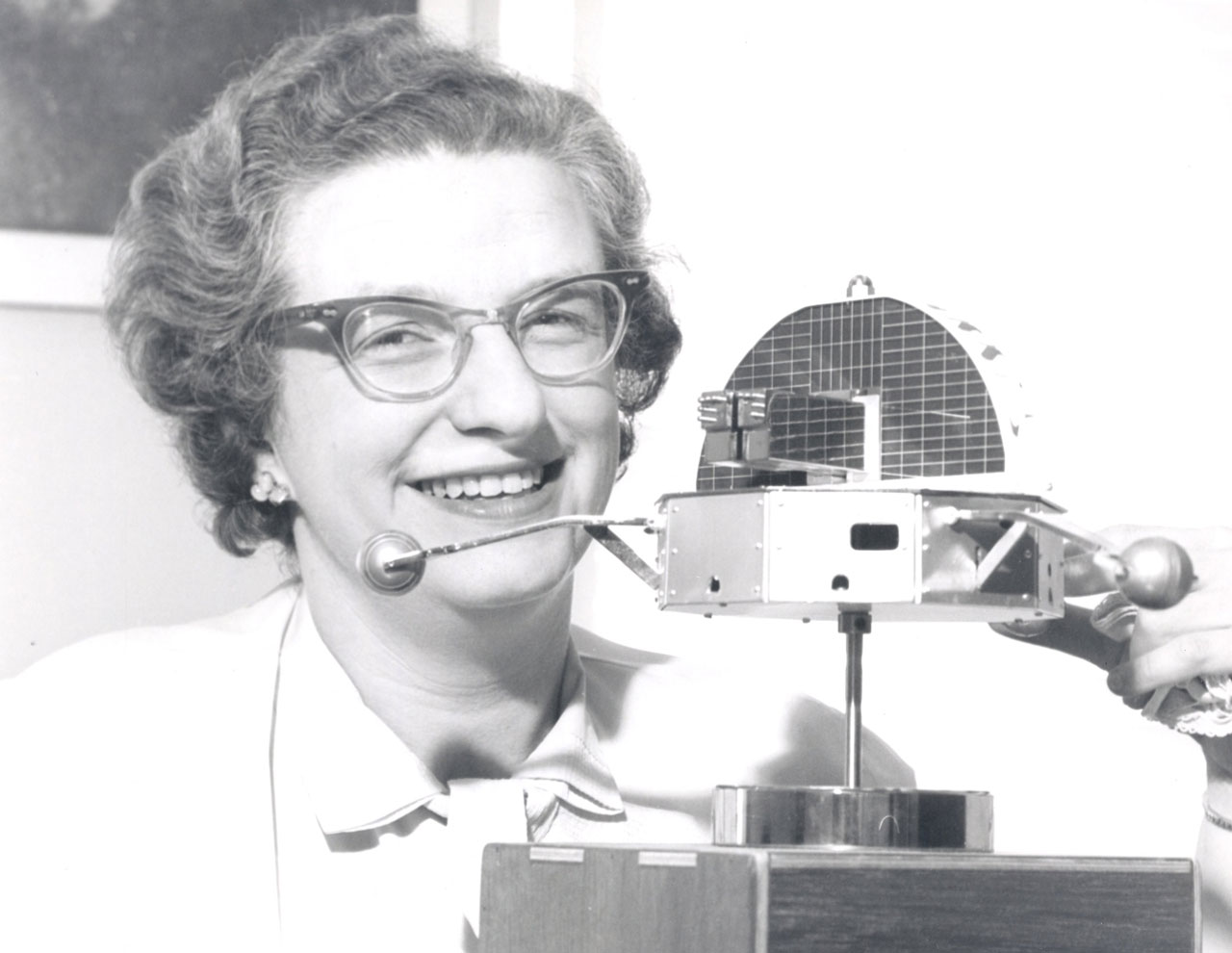
Where are you from?
I was born in Nashville, Tennessee, but I lived in a number of places. In 1937, I moved to Baltimore, where I attended junior high and high school. I lived there for five years before leaving for college (it was my longest home before college). After 1955, I lived in the Washington, DC, area.
What first sparked your interest in space and science?
I’ve been interested in it as long as I can remember. I blamed my mother because she used to take me out and show me the constellations and the Northern Lights, things like that. I told her this a little while before she died, and she was shocked. She said, “Well, I also took you out and showed you the birds and the trees and the flowers.” And I remember that — I remember her taking me out on long walks and showing me things, but they didn't stick — the astronomy did.
I think I just was fascinated. Between fifth and sixth grades, I organized my friends into an astronomy club to study the constellations. And by seventh grade I’d decided I wanted to be an astronomer, and I was going to try for it. I knew it was going to take me another 12 years of schooling, but I figured I'd try and if I didn't make it, I could teach physics or math in high school.
I think I've always been curious, and I just wanted to satisfy my curiosity. And I'm curious in more than just science, to be sure, but astronomy in particular was a subject I wanted to learn more about. I wanted to learn more about science generally.
How did you end up working in the space program?
I didn't think I could get tenure as a research astronomer, and I didn't want to stay in research. I like teaching very much, but I didn't want to do just teaching. I didn't think I could stay in the academic community. I heard about a job in Washington at the U.S. Naval Research Laboratory working in radio astronomy — which was new in this country at that time. I decided that it had a lot of possibilities for galactic structure, which is what I was interested in at that time — the structure of the Milky Way.
I was right about that, but I was too early, because at that time radio astronomers in this country were expected to build their own instruments. I did not want to start over as an engineer — I wanted to stay in astronomy. I enjoyed the work, so I wasn't looking terribly actively for a new job. But when NASA came along and offered me a job I decided to take it.
A few months after NASA was formed, I was asked if I knew anyone who would like to set up a program in space astronomy. I knew that taking on this responsibility would mean that I could no longer do research, but the challenge of formulating a program from scratch that I believed would influence astronomy for decades to come was too great to resist.
Tell us about your role with Hubble. What did you do?
My role at Hubble was as program scientist. That means that I basically tried to sell the program. I did other things, too, but my major effort was trying to convince people that it was very well worth doing.
Astronomers badly wanted a large telescope above the atmosphere. So, they had a chance — Hubble was a great idea.
The National Academy of Sciences used to have a summer study in which they provided information to help NASA plan its program. One of these was in 1962. One of the people at the meeting had studied the Apollo booster and decided that it could carry a 3-meter telescope (about 9 feet in diameter).
I didn't do anything with it at that time. I knew how much trouble we were having trying to build a satellite to carry a 6-inch telescope. The idea of getting started on a 9-foot telescope didn't appeal to me.
But it did appeal to the aerospace companies, and it particularly appealed to a NASA center in southern Virginia (Langley Research Center). They had responsibility for the manned spaceflight program at that time. They thought this idea of a telescope above the atmosphere where a man could ride along looking through the telescope was just the greatest thing they could think of.
Of course, the problem was that the astronomers didn't want a man along at all, because a man needed to breathe, and we didn't want an atmosphere — that was what we're trying to get away from.
Also the man would wiggle occasionally and if you were taking a half-hour exposure — I don't care how carefully he tried to keep still — he isn't going to keep still for a half hour and every time he moved, the telescope would move. So, this did not make sense to the astronomers.
I decided that if the aerospace companies were going to put a lot of money into designing a telescope, they might as well design one that made sense.
I still thought it was a little early to get started on a 9-foot telescope. But, okay, if they're going to do it, we will do it. All I did was to bring together a collection of astronomers from all over the country and some NASA engineers, and get them to sit down together and come up with something that the engineers thought would work, and that the astronomers thought would do their job. That was really the beginning of the serious effort on the Hubble.
Beyond that, my job was trying to convince, first, NASA, and then the bureau of the budget, and the executive part of government, and then Congress, that was worth doing.
One of the stories that I like to remember is that Senator William Proxmire, a senator who was noted for laughing at projects that he thought were a waste of money, sent NASA a question: Why would the average American taxpayer want to pay for something as expensive as the Hubble?
I sat down, did the back of the envelope calculation, and came up with the fact that, for the price of one night at the movies, each American would receive 15 years of exciting discoveries.
I may have been off by a factor four, or maybe a little more. But even if it turned out to be a night at the movies once a year — I think we have had more than our return from Hubble in excitement.
Why are you called the “Mother of Hubble”?
Lyman Spitzer, an astronomer at Princeton [for whom NASA named the Spitzer Space Telescope], had been pushing for a telescope above the atmosphere for a long time. He did a lot to convince people that it should be done, and so he was known as "the father of Hubble.”
Ed Weiler [former head of NASA's Science Mission Directorate] said that if Spitzer was going to be the father of the telescope, I should be "the mother of Hubble.” Weiler was the one who called me that.
Tell us about your job as NASA’s chief of astronomy
As the chief of NASA's astronomy and relativity programs, I was involved with planning a program of satellites and rockets with the advice of a wide sample of the nation's astronomical community. I also administered a significant program of grants to support this astronomy, in both its execution and the understanding of its results.
What I liked most about being the chief of these programs was the many contacts I had with scientists who were on the forefront of astronomical research, and with the broad astronomical community in this country and abroad.
What's one piece of advice you would give to others interested in a similar career?
My career was quite unusual, so my main advice to someone interested in a career similar to my own is to remain open to change and new opportunities. I like to tell students that the jobs I took after my Ph.D. were not in existence only a few years before. New opportunities can open up for you in this ever-changing field.
If you enjoy puzzles, science or engineering may be the field for you, because scientific research and engineering is a continuous series of solving puzzles. It is also a continuous process of learning new things, whether you discover them or study the work of others. Science, like all jobs, has its share of drudgery and boredom, but basically it is fun.
What has been your biggest challenge, professional or personal, and how did you overcome it?
I certainly did not receive any encouragement. I was told from the beginning that women could not be scientists.
In high school, I asked my guidance counselor for permission to take a second year of algebra, instead of a fifth year of Latin. And she looked down her nose at me and sneered, “What lady would take mathematics instead of Latin.”
The first encouragement I got was in my junior year at college. The head of the physics department came up to me in lab one day and said, “You know, I usually try to talk women out of going into physics. But I think maybe — you might make it.”
That was my first encouragement.
Who inspired you?
It was probably my parents who inspired me most. My father was a scientist and answered my scientific questions, while my mother took me on walks and showed me birds and plants. She also took me out at night and showed me the constellations and the auroras.
What have been some of your favorite projects to work on?
One of my favorite moments in my career was when I realized I had discovered something important that no one had ever suspected. Upon careful inspection of low-dispersion spectra of bright stars similar to the Sun [these were usually photographic plates with the light from each star spread out in a small spectrum], I noticed that compared to the strength of the hydrogen lines [that is, the appearance of specific places in the spectra related to the presence of hydrogen], the strengths of the lines of other elements varied from star to star. When I divided the stars into two groups on the basis of line strengths — I noticed that the stars with the stronger lines moved around the center of the Milky Way in circular orbits, similar to that of the Sun. The others tended to move in more elliptical orbits, and to stray farther from the plane of the galaxy. This was the first indication that common stars were not all the same age. Because the other [non-hydrogen] elements are made in stars, it means they increase in abundance as stars die.

